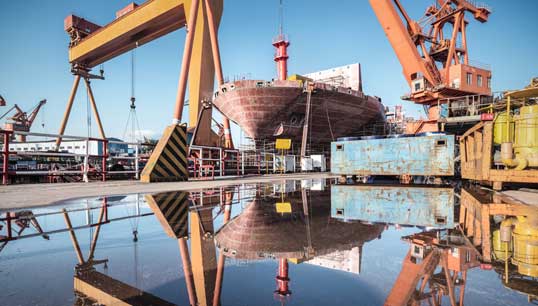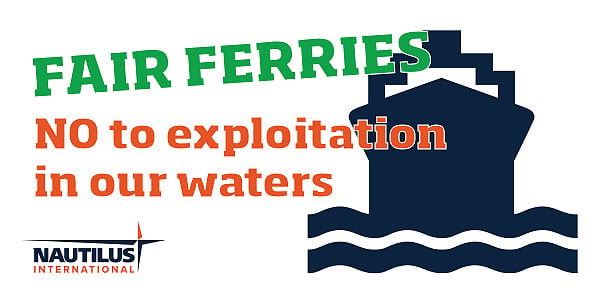P&O Ferries spends £220 million on new vessels after laying off UK seafarers
31 March 2022

It has been revealed that P&O Ferries is spending £220 million on two new 'superferries' from a Chinese shipyard, after CEO Peter Hebblethwaite told Parliament that the business is not financially viable and that it needed to cut costs by making 800 British seafarers redundant and replacing them with cheaper agency crew.
The new ferries raise further concerns of increasing levels of fatigue among seafarers on the short sea route.
The reported £220 million investment in new tonnage, to arrive in Dover in the Autumn of 2022, represents a significant opportunity to improve fuel efficiency and improve speed of turnaround operations – according to company reports surrounding the P&O Pioneer and P&O Liberte. However, the company does not mention the impact shorter turn arounds will have on crews who already operate 10 daily crossings of the world’s busiest shipping lane.
P&O Ferries in 2012 abandoned plans to instigate a working pattern of two weeks onboard, two weeks rest for crews working 12-hour days on the short sea routes. This was in response to a fatigue audit undertaken by Professor Andrew Smith of Cardiff University, who in recent press statements confirms the significant fatigue already existing in short sea ferry operations.
Mr Hebblethwaite, in his brazen admissions of unlawful corporate practice, also admitted to not seeing a safety risk assessment over plans to fire and replace all the company’s UK seafarers, yet confirmed crew would be working longer tours of duty on insecure contracts of employment through third party crewing agencies.
Mr Hebblethwaite has consistently failed to answer concerns over safety, with the MCA acting to detain two of its vessels after port state control inspections, and the company insisting, without evidence, that the planned working patterns on the short sea, and on routes elsewhere, are safe.
P&O Ferries plans to minimise loading/unloading operations on the new vessels. This will increase the pace of operations and run the very real risk of further compounding seafarer fatigue. Any changes to trading patterns will impact those engaged in vessel operations and crews will suffer the consequences of being forced to operate to ever tightening timetables and demands.
Alongside precarious employment practices this could lead to a return of the toxic work culture and practices of ferry operations in the 1980s. With very real, very tragic consequences – such as those witnessed in the 1987 Herald of Free Enterprise disaster, which resulted in the deaths of 193 passengers and crew and was found to be caused predominantly by a lax safety culture and a prioritisation of financial considerations over safety.
Nautilus general secretary Mark Dickinson said:
'Our concerns about the safety of P&O Ferries operations remain. The new crewing model is not safe and whilst Nautilus continues to work with government to secure protections against sub-standard operators, seafarers continue to be placed at risk, as well as the travelling public. These new vessels, which would have been introduced to the company’s fleet in collaboration with maritime unions to support safety and sustainability in crewing and operations, will now likely be used to further exploit precarious employment practices that compromise safety and induce fatigue.'

JOIN Nautilus International in the campaign for Fair Ferries!
Mark Dickinson's speech on Fair Ferries and P&O Ferries Sign the open letter to the governmentTags
More articles
Nautilus statement on UK government package of measures on P&O Ferries
Nautilus broadly welcomes all the measures in the UK government package of measures on P&O Ferries but says it does not go far enough
